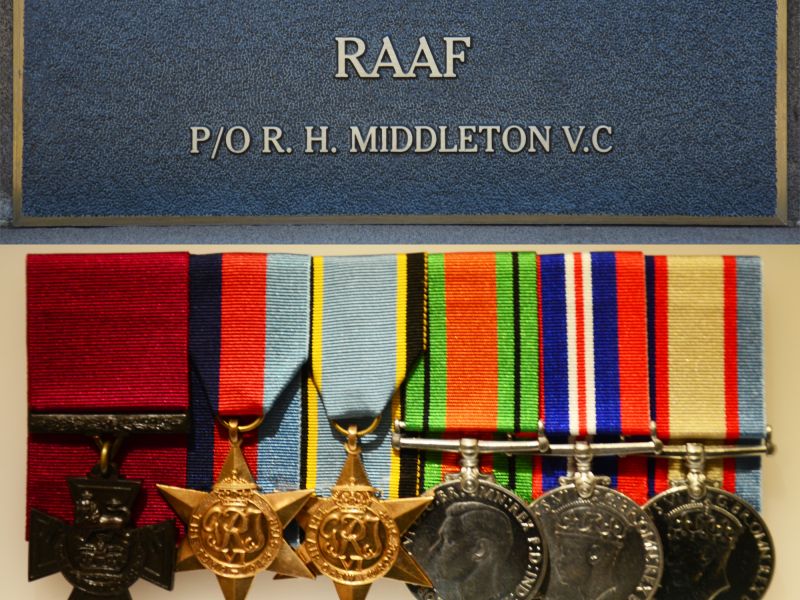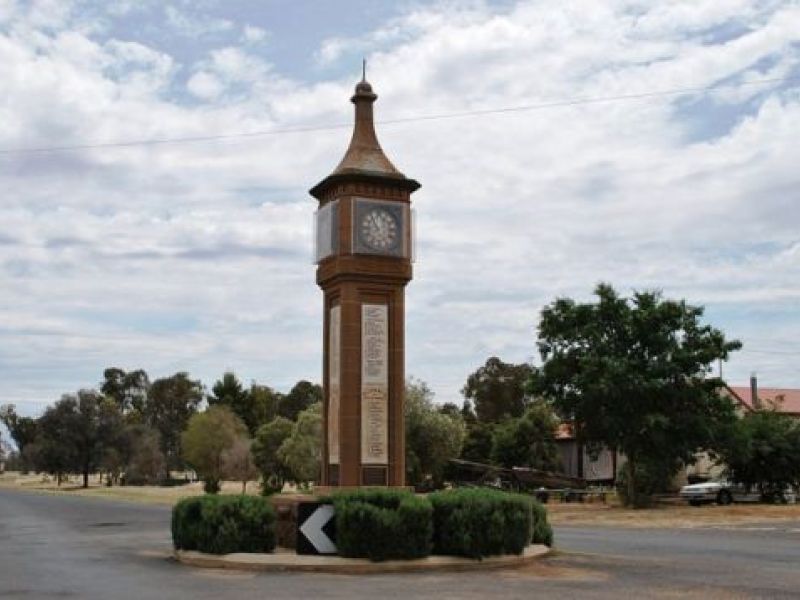A strong streak of honest determination
At the base of one side of the Bogan Gate War Memorial Clock Tower is a plaque reading “RAAF” with beneath that the simple inscription “P/O R.H. Middleton V.C”. The story of the man named, however, is one of courage, determination and self-sacrifice.
In October 1940, Rawdon Hume Middleton was working as a jackeroo in the Bogan Gate area. He travelled to Sydney to enlist in the Royal Australian Air Force, under the Empire Air Training Scheme. After initial flight training in Australia he was sent to Canada to continue his instruction. In September 1941, he reached Britain and in December of that year was promoted to Flight Sergeant.
In February of the following year Middleton was posted to 149 Squadron, Royal Air Force, and began his operational career as second pilot in Stirling bombers. By July he had become first pilot and captain of his aircraft.
In Bomber Command, 30 operational flights were considered a tour of duty. On 28 November 1942 Middleton took off on his 29th operation, to the Fiat works in Turin, Italy. When his aircraft was over the target it was struck by anti-aircraft fire. One shell exploded in the cockpit severely wounding Middleton, the second pilot and the wireless operator. Middleton’s right eye was destroyed and the bone above it exposed. He lost consciousness and the aircraft dived before the second pilot brought it under control. The aircraft was hit again as they tried to escape the target area.
Having regained consciousness Middleton began the long and gruelling flight back over the Alps towards England. The crew discussed the possibility of abandoning the aircraft or trying to land in northern France but Middleton decided to head for England where his crew would have the chance to bail out into friendly territory.
The Stirling was again hit by flak over the French coast but flew on. Finally, over the English coast with only five minutes of fuel left, Middleton ordered the crew to abandon the aircraft. Five men left the stricken plane but two remained on board to help Middleton before they too tried to parachute to safety. Unfortunately, both landed in the sea and were drowned. Middleton was too weak to leave the Stirling which crashed into the sea on the morning of 29 November 1942, killing him.
After Middleton's body was washed ashore at Dover, in February 1943 he was buried in St John's churchyard, Beck Row, Suffolk, with full air force honours.
The bravery demonstrated by the very quiet, moody young man with a strong 'streak of honest determination' earned him the admiration of the British public. His “Devotion to duty in the face of overwhelming odds”, considered at the time “unsurpassed in the annals of the Royal Air Force” resulted in the award of a posthumous Victoria Cross.
In 1978, Middleton's V.C. was presented to the Australian War Memorial. It was the first Victoria Cross awarded to a member of the Royal Australian Air Force in the Second World War.
- Australian War Memorial https://www.awm.gov.au/collection/P10676514

 Henry C Moulds
Henry C Moulds